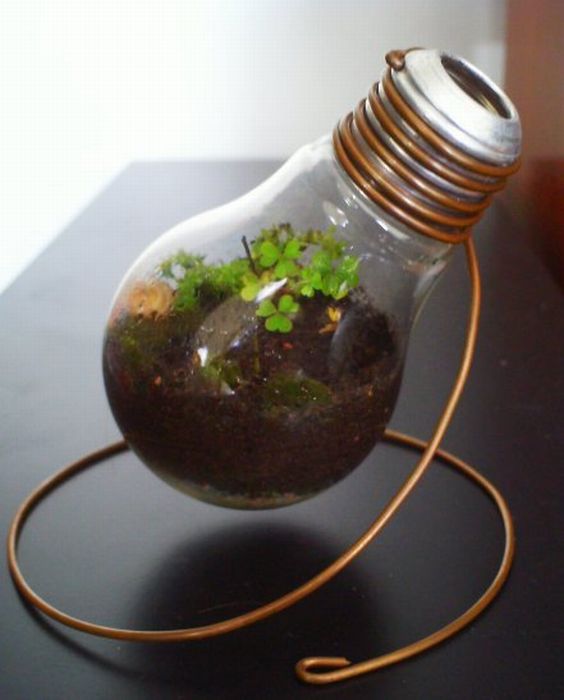|
|
Plants Art From Old Light Bulbs
|
In 1906, the General Electric Company patented a method of making filaments from sintered tungsten and in 1911, used ductile tungsten wire for incandescent light bulbs.
In 1913, Irving Langmuir found that filling a lamp with inert gas instead of a vacuum resulted in twice the luminous efficacy and reduction of bulb blackening. In 1924, Marvin Pipkin, an American chemist, patented a process for frosting the inside of lamp bulbs without weakening them, and in 1947, he patented a process for coating the inside of lamps with silica.
In 1916, Hygrade, predecessor to Osram Sylvania, discontinued its refilling service for burned-out light bulbs and produced 11,000 new light bulbs per day.
In 1930, Hungarian Imre Bródy filled lamps with krypton gas in lieu of argon. He used krypton and/or xenon filling of bulbs. Since the new gas was expensive, he developed a process with his colleagues to obtain krypton from air. Production of krypton filled lamps based on his invention started at Ajka in 1937, in a factory co-designed by Polányi and Hungarian-born physicist Egon Orowan.
|
|









